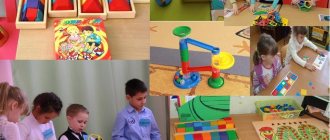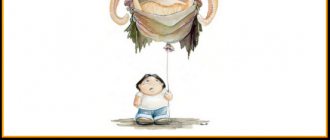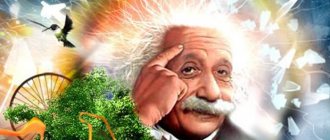In this article we will tell you:
- What is creativity and where does it come from?
- Ways to determine the level of creativity development
- Distinctive Traits of Creativity
- 5 steps to develop creativity
- 12 ways to develop creativity
In the 21st century, creative thinking is one of the key skills in many fields of activity. In most cases, it means something creative or related. Some perceive it as a character trait and are sure that this quality is either given from birth or not. Almost no one knows what it is and how to generally assess the level of development of creativity.
At the same time, this ability can be developed in oneself even with modest inclinations, although creativity seems to be not subject to any rules, nevertheless they exist. And by following them, as well as performing special exercises, any person can get good results and increase the level of their creative thinking.
What is creativity
The term was first proposed by psychologist Joy Paul Guilford in the middle of the last century. The concept is closely intertwined with two Latin words: “creative” - creative and “creatio” - creation. In English there is a synonym for the word “creativity” - creativity.
Interesting fact! Creativity and creativity, according to psychologists, are sisters who are similar in many ways, but they have different characters.
Creativity is associated with specific activities, specific efforts. And creativity is, first of all, freedom, the absence of rules and frameworks.
Thus, creativity is a person’s ability to think outside the box, make witty, bold decisions using a whole range of tools, resources, knowledge and experience. A word with a similar meaning is ingenuity.
It is noteworthy that there are different versions regarding the emergence of creative abilities. According to one of them, creativity was formed for a long time under the influence of cultural and demographic changes. And according to another version, the ability to think creatively appeared approximately 50 thousand years ago due to mutations at the genetic level.
Creativity and Creativity
Many people mistakenly believe that creativity and creativity are the same concepts. In this case, why was it necessary to invent some kind of creativity if there is creativity? The fact is that creativity is a process, and creativity is an ability (innate or developed) that helps you create. If we consider in practice, creative people are artists, photographers, writers who realize themselves through creativity. The term “creative” is more suitable for business professions - marketer, designer, brand manager.
So, creativity is more spiritual and sublime, and creativity gravitates towards the material. Moreover, the concept of creative in business sounds frivolous and even a little offensive, but creative means praise and high appreciation of work results.
Important! In the modern world, the word creative is shifting more towards the original, non-standard and, most importantly, creating something new.
It has been proven that creativity directly depends on how mental processes proceed; accordingly, psychologists pay close attention to this phenomenon and concept.
Creative thinking in psychology
Psychologists describe creativity as a stable characteristic that determines the degree of a person’s giftedness. Creativity, according to psychologists, is an internal potential that can unfold and manifest itself when required to complete a certain task.
Abraham Maslow noted that creativity is a universal human quality that is possessed by people who strive for the absolute disclosure of personal capabilities. Creativity helps a person to act not in a stereotyped way, but creatively, which means originality.
Psychologists offer 10 criteria that help assess the degree of creativity of a person.
- Every person is creative. Psychologists propose to accept this statement as an axiom. All children are artists at heart, but as they grow older, everyday life and the prose of life leave their mark.
- Creativity is a person’s reaction to rigid boundaries and limitations. The more tightly a child was controlled in childhood, the more creative he will be as an adult. Thus, a person expresses an internal protest against the prohibitions.
- Boredom and monotony of life awaken creativity. Please note that the more inconspicuous a person and his profession are, the more clearly his creativity can manifest itself. The brain gets tired of monotony, routine, and demands new impressions.
- Creativity in connection. It has been proven that in different cultures, children are more likely to grow up creative, since they have to adapt to different norms and rules.
- Creativity comes from a void because it needs to be filled. We are talking about emptiness in personal life, work, emotions.
Interesting fact! Put a white sheet in front of a person, a creative person will definitely draw or write something on it, because a white sheet is unbearable for him.
- A prerequisite for creativity is communication with people. This fact is confirmed by many representatives of creative professions. You can create only under the influence of other people, their talent, experience.
- Creativity is multitasking. A truly creative person is able to hold a huge amount of information in his head and perform many tasks simultaneously.
- Creativity is the ability to look at a task or situation from a different angle. Learn to question everything you see and hear, try to turn even obvious truths upside down.
- Creativity is the ability to go beyond limits. Dare to do things you would never do before, because creativity begins where boundaries end.
- Creativity is like hypnosis. True creativity can captivate entire masses. Revolutions are created by creative people who are able to influence the consciousness of other people.
Important! The distinctive properties of a creative person are an IQ level above average, but not too high, flexible thinking and the main principle of life is creativity.
Why do you need creative thinking?
Psychologists note that creativity is the flexibility of thinking, through which a person can think, see much more than an ordinary person, express ideas more boldly, and not follow conventions and rules. It is obvious that with standard thinking, important decisions are made in a stereotyped way, under the influence of stereotypes. In situations where creativity can help you find opportunities, conventional thinking will only see obstacles.
Creative thinking is a kind of phenomenon, a special trigger of excitement. The more innovative the thinking, the more interesting it is for a person to find as many solutions as possible, rather than follow the first plan that comes to mind.
In everyday life we have to make a huge number of decisions, some people find this process exciting and interesting, but there are people who find it difficult to decide. If you belong to the second category of people, develop creativity and you will soon notice that your thinking becomes flexible.
Important! Creativity is not just a modern trend, but a necessary trait with which you will live life brighter, richer, and become bolder.
Creativity in the modern world
In the modern world, concepts are often substituted. The fact is that the word creative is used too often and as a result it has acquired a somewhat distorted meaning, meaning absurdity, absurdity
You must clearly understand that substituting concepts in this situation can play a cruel joke on you. For example, dressing in a strange suit, a person will look strange and tasteless. Perhaps original, but it will have nothing to do with creativity.
Important! Often creativity is used to justify a failed set of clothes, haircut, makeup, or gift.
The main obstacle to creativity
In the 60s of the last century, Soviet neurophysiologist Natalya Bekhtereva made an interesting discovery and hypothesized about the peculiarities of brain function in creative people.
The woman discovered a certain “error detector” that is triggered in the head by default when something in our reality begins to not correspond to the usual scenario. For example, when you leave your apartment and forget your keys, you may feel some strange feeling arising inside. It is this “strange feeling” that provokes this “error detector”, signaling that a person is doing something wrong. It is clear that by nature this quality is laid down with the best intentions in order to minimize the number of misunderstandings in our lives. According to Bekhtereva, it is the hypertrophied work of this detector that blocks people’s creativity. For creative people, this “option” does not work so actively, which allows them to be creative easily.
Under the influence of alcohol, this mechanism is turned off, which explains that very feeling of inspiration and omnipotence that overtakes a person under the influence of alcohol. But resorting to such “therapy” is harmful to health; it is much better to use useful exercises, which we will discuss later.
Signs of a creative mind
Creative thinking can be defined by the following criteria:
- fluency, speed, originality - in a short period of time, a creative person will offer many ideas, all non-standard;
- flexibility of thinking - a variety of strategies, tools, and capabilities are used to solve a problem;
- attention to detail - a creative person works out his idea to the smallest detail;
- abstract thinking - the ability to think in categories that do not exist in the real world, and also to transform them into accessible words.
The main criterion of creativity is resistance to patterns, the ability to abandon stereotypes and accept a huge amount of new information.
American psychologist Scott Barry Kaufman studied the concept of creativity for many years and as a result, he was able to identify 18 traits characteristic of creative individuals:
- these are dreamers - a person dreams when the consciousness is especially active, it is in this state that sudden insights occur, studies have proven that daydreaming uses the same parts of the brain and processes as creativity;
- these people are always observing - it is in the world around them that people draw inspiration and opportunity;
- they work only when they work best - for some it is early morning, and for others it is late at night; it is around their creativity that such people build their lives;
- It is important for them to be alone - according to statistics, creative people created their best work when they were alone;
- such people benefit from any difficulties in life - difficult situations become a catalyst for the creation of real masterpieces, by the way, in psychology there is a whole direction that studies post-traumatic states, as a result of which outbreaks of creativity occur;
- such people have good taste because they surround themselves with beautiful, refined things;
- a creative person is a visionary, that is, he is able to see connections between things that seem unrelated to other people;
- Such people cannot stand routine and monotony; they constantly rearrange furniture and try something new in life.
Creative people are also interested in everything new, they are curious, observant, they often take risks, and they are not shy about expressing themselves.
Quite often, creativity is accompanied by failures and defeats, since people with non-standard thinking are in constant search and do not rest until the result meets expectations. The more difficult the task is, the more enthusiastically a creative person takes on its implementation - this is a kind of passion, a desire not for financial gain, but for the realization of his creative ideas and ideas.
Interesting fact! When a creative person creates, he can enter a special state of “flow,” thus achieving the highest concentration and calmness. At such a moment, nothing and no one can throw him out of balance and distract him from the creative process.
What influences our level of creativity?
In this context, it is appropriate to touch upon the topic of barriers that impede the development of creativity. The fact is that most of these barriers are created by a person himself - these are artificial restrictions imposed by society, the environment, internal traps.
- Barrier #1 is the desire for certainty.
It is vital for an adult to feel confident in the future and clearly understand the essence of the task at hand. Any uncertainty is accompanied by the desire to eliminate it, and for this, thinking finds the simplest way. However, the clearer and more accessible the problem is formulated, the simpler the solution will be; accordingly, there is no room left for creativity.
Important! Creativity cannot exist without uncertainty. Imagine a fire, add oxygen and it will burn brighter, remove oxygen and the fire will go out. Uncertainty is the oxygen for creativity. How to get uncertainty? Just step outside your usual comfort zone.
- Barrier No. 2 - we are afraid of other people's assessments.
Any new business is a fear of mistakes and failures, of universal condemnation. This is why people prefer to solve problems in their usual way, without inventing anything new. If fear is based on the condemnation of loved ones, whose opinion is important, it increases several times.
- Barrier No. 3 - low self-esteem and stereotypes.
Lack of self-confidence is a serious obstacle to the development of innovative thinking. And an underestimate, seasoned with a whole bunch of stereotypes, principles, habits, internal attitudes - this is generally an explosive mixture that not only affects, but eradicates the possibility of creating something truly creative.
Important! Do you want to change something in your life? Feel freedom? Start getting rid of one of the main stereotypes - you can think creatively only in childhood. In fact, you can develop non-standard thinking at any age - change your habits gradually, introduce new principles. Yes, this will require effort, since you will have to constantly work on yourself.
Creative thinking and work
Creativity is not only valued, but welcomed and necessary for many experts - photographer, designer, SMM manager, marketer, event organizer. Experts predict that in the near future, about 60% of professions will become automated, and humans will be in demand only where creativity is required - qualities that artificial intelligence cannot master and understand.
Today, many advertising agencies have the position of creative director, who manages a staff of designers, proposes ideas, and is responsible for the final product. In modern realities, creativity is not a whim, but a mandatory requirement. So, what do employers mean when they want to see this quality in a person, and how to write a resume correctly to avoid mistakes.
- Keep it in moderation. When it comes to creativity, a sense of proportion is necessary above all. If you give in even a little to the impulse and don’t stop in time, the result will turn from stylish and original into bad taste. Of course, first of all, you need to remember your immediate responsibilities and only then think about creativity.
- Your claim of creative thinking must be supported by a portfolio. You must prove your abilities with real results.
- Try to describe your abilities as clearly and in detail as possible.
Everything comes from childhood
By the way, about innate qualities.
If you observe children, you can conclude that all children are creative by default. They come up with games out of the blue that don't exist, they use things for other purposes, they develop dialogue for characters in role-playing games and they come up with gameplay scenarios from scratch on the fly. The older a child gets, the less creativity he shows. Why is this happening? At a young age, no one tries to limit the child. He grows up without knowing the “rules” and “installations” that exist in the adult world. When a child draws, no one explains to him the laws of color, what colors are “correct” or “wrong” to combine, how to construct a perspective “correctly,” how to “correctly” depict a person.
It is this lack of rules that does not block creativity, which is why each child's drawing is unique. With age, under the influence of upbringing and the educational process, this spark fades, the child is forced to do not as he feels, but as “correctly” and already habitually. Based on these observations, we can put forward the assumption that creativity is inherent in every person from birth, but not everyone manages to maintain this valuable quality. Fortunately, all this is reversible.
Development of creative thinking
Fortunately, lateral thinking is an ability that can be developed at any age. This is one of the psychological skills, and any skill can be “pumped up”. There are many techniques for this. Here are a few simple and effective ones.
1. The “Six Hats” method.
This method was developed by a British psychologist specializing in creative thinking, Edward de Bono. Each hat is painted a specific color, which symbolizes a specific type of thinking. Thus, each situation can be analyzed from six different angles, presenting an idea from different points of view. For example, white color - cold reason, pragmatism; red – intuition, premonition; yellow – optimism and positivity; black – pessism, criticism; green – creativity; blue is the color of the leader who makes the final decision.
2. Do standard things in a new way.
Try to eat with your left hand rather than your right, and get to work by a different route. Thus, new neural connections are formed, necessary for non-standard thinking.
3. Be interested in something that has nothing to do with work.
If a specialist in the advertising field becomes interested in history or a manager becomes interested in traveling, this is already creative and, as a result, develops non-standard thinking.
4. Pay attention to the random word method.
A great way to solve specific problems. For example, you are working on creating a presentation, but you have no ideas. Write down any noun and come up with 10 associations for it. Now for each word, come up with several options for using it to solve the problem.
5. Learn to see non-standard opportunities in standard things.
Take any item, first come up with 5 to 10 ways to use it, then try to determine how this item cannot be used. Please note that you will soon be refuting your versions. And at the last stage, come up with several ways to use the selected item in a non-standard way.
Here are some more practical tips for developing out-of-the-box thinking: Start your day with a new scent (essential oils are best); visit places you have never been before, this could be a new store, a park, a route to work; develop tactile sensations; experiment with your clothing style (it doesn’t have to be drastic, it’s enough to change one thing at a time in your wardrobe).
Important! Creativity is impossible without a clear mind, so that your consciousness is as concentrated as possible, use meditative techniques. Meditation improves memory and reduces stress.
Stereotypes in thinking
First, let's figure out what stereotypical thinking is. For example, “all women dream only of a rich husband”, “blondes are stupid”, “big money can only be earned dishonestly”, “more expensive means better” - all of the above statements are stereotypical, but this does not make them true. A stereotype is a generalization based on some characteristic; naturally, in this case we cannot talk about any creativity or individuality.
Types of stereotypes:
- polar - a person perceives everything as either “white” or “black”;
- negative forecasts - a person predicts only a bad and unhappy future;
- failures are a priority - a person notices only bad events;
- trust only first impressions;
- labeling;
- strict adherence to patterns.
Stereotypical thinking leads to a loss of individuality; a person acts in a stereotyped manner in any situation, as a result he becomes faceless, without distinctive features. People with stereotypical thinking are characterized by low self-esteem because they feel imperfect. Over time, they begin to feel disgusted with themselves and aggression towards other people.
What will fighting stereotypes and templates give you? First of all, you will learn not to depend on the opinions of other people and will not succumb to manipulation. You will form personal thoughts and judgments. As a result, you will be able to achieve your goals more easily and not succumb to negative thoughts and moods.
Why do you need to develop creative thinking?
First of all, the development of creative thinking reveals a person’s hidden abilities, and this is useful for both employees and company owners. Thinking outside the box helps a person look at traditional things, himself, his work in a new way and unlock his potential.
With the development of creativity, a person begins to perceive the world around him as an inexhaustible source of opportunities and does not notice obstacles.
And finally, creativity is necessary for development, improvement, and search for innovation. By thinking outside the box, you can refresh your work methods and achieve the planned result. And a creative approach will highlight the product, make it comfortable to use, attractive, and competitive.
Important! Non-standard thinking is a necessary element of modern business thinking, which helps to adapt to current realities and respond to changes and challenges in a timely manner.
Features of the development of creative thinking, where to start
Psychologists note that all people are endowed with the ability to build non-standard logical chains; moreover, for each person it is possible to determine the level or coefficient of creative intelligence. It is designated CQ, it is not related to IQ, but is quite developable. To succeed in this difficult but exciting activity, it is important to take into account some features of the development of creative thinking.
- Be positive. Creativity loves a special psychological mood. Agree that a person who sincerely believes that he is a loser is unlikely to be able to generate new ideas.
Advice! Take a sheet of paper and divide it into two parts. In one, write down the fears that prevent you from achieving your goal, and in the other, a plan aimed at overcoming these fears. Perform scheduled actions regularly.
- The main principle of the development of creative thinking is association. They stimulate thinking, creativity and creativity. For example, take a simple item and come up with some creative uses for it. Or open the book to any page, point your finger at a word, write it down and repeat the action several more times. Now try to connect the words and come up with a logical sentence from them. Please note that over time, the brain comes up with associations faster.
- Use the principle of reincarnation. For example, imagine yourself as an executive or director, an architect or a writer. For each role, come up with a critical situation that you urgently need to solve and do it in a non-standard way.
- Use both hands - this is another important feature of creative development. If you learn to be equally dexterous with both your right and left hands, your creativity will improve.
- Buy a notebook and write down your ideas in it, even if they seem absurd, and most importantly, read relevant literature, follow creative people on social networks, look for worthy examples that will inspire you.
Advice! Remember that a creative impulse can happen at any moment, so you should always have a notepad and pen with you.
Children's creativity and how to develop it
The ability to think outside the box helps a person throughout his life. It is necessary to develop this ability from early childhood, when the child has just become a schoolchild. The sooner you pay attention to creativity, the easier and faster in adult life a person will perceive familiar things and situations in a non-standard way. It is people with creative thinking who become billionaires and successful people.
Here are some simple exercises for children (they are not offered in school, so parents must teach children):
- Draw some doodles on a piece of paper for your child and ask him to complete the drawing to a recognizable object, start with simple shapes, gradually complicating the task;
- invite your child to draw a picture using only one geometric figure;
- draw several identical figures on a piece of paper and ask the child to complete each one to a clear object or character, award points from 1 to 10 for each successful solution;
- play associations, “Words” (let the baby name words that have the same meaning);
- offer the child a situation, one object and let the child come up with a fairy tale or story using these two clues;
- ask your child as many questions as possible; searching for answers develops creative thinking;
- take any word and imagine that it is an abbreviation, come up with an original decoding with your child;
- brainstorm regularly - offer your child a situation for which he must quickly come up with a solution;
- compose fairy tales together and the more unusual they are, the better.
Interesting fact! Do you know such a thing as divergent thinking? A person comes up with several options for using one item. Offer him one item and ask him to come up with different ways to use it.
Buy construction sets for your child - these can be completely different sets with parts of different shapes, sizes, and made from different materials. Offer different puzzles. In fact, there are a huge number of methods for developing creative thinking. The only condition when it comes to developing non-standard thinking in a child is to do this through play.
Remember that you can only develop creative thinking by expanding your horizons - your child should read, solve puzzles, encourage his interest in everything new.
Innate gift or acquired ability
Once upon a time, someone spread to the masses a myth about two hemispheres of the brain that work almost separately.
And that, depending on which hemisphere a person has more developed, he can be a mathematician (aka logician) or an artist (aka emotionalist). However, such a statement so grossly simplified the correct understanding of the working model of the brain that it became a misconception. It was this approach that introduced an element of fatality, because it was believed that if creative abilities are not given from birth, then you just need to come to terms with it. The brain is a very complex mechanism that works harmoniously, activating different areas as needed, but this is not divided into “right” or “left” sides. There are scientific works that have debunked this myth to smithereens, so let’s agree, from now on we’ll forget about it.
Andreas Fink proved in one of his works that everyone can develop creativity. He gathered a group of people whom he asked to solve creative problems regularly for two weeks. These were tasks like “come up with a slogan...”, “give a name...”. Every day people coped better and better, and the changes were not only subjective, based on the feelings of the subjects and the observer, but also objective: real changes in the functioning of the brain were noted. Thanks to this observation, we can draw a positive conclusion that to develop creativity, your desire and regular training are enough.
Exercises to develop creative thinking
It is noteworthy that a huge number of techniques and methods have been developed for the development of non-standard thinking. Many do not require a penny of investment, and some can even become a source of income.
The easiest and most accessible way to become more creative is to look for interesting uses for new objects and things. Agree that in any activity, especially in everyday life, people most often use templates. Try to gradually refresh your life and usual activities with unusual details. Repurpose old things, find new uses for coffee grounds, coconut oil, T-shirt, comb, nail polish. Try to come up with the ending to a half-read book or turn off the sound of a movie and duplicate it.
Be sure to sign up for online courses, as new experiences stimulate brain function and promote the synthesis of new nerve cells. If not online courses, then new music, new books, new hobbies.
Try a new job for a change of scenery. If this is not possible, update your workplace - buy a new set of office supplies, install a new lamp.
Online brain simulators
We bring to your attention five exciting online services that will help you “pump up” your intelligence, memory, logic, and creativity.
- NeuroNation. A wonderful project prepared by a professor of psychology and the best experts in the field of artificial intelligence. The application can be installed on a smartphone, read articles, and play mini-games. Go to website
- Peak. The app contains interesting exercises for memory, logic, emotionality, and thinking. Go to website
- Vikium. According to statistics, after just a week of training, reaction speed increases by 17%, memory improves by 19%. You are offered daily classes with varying levels of difficulty. You can go to the course using the link: Course on the development of creative thinking
- BrainApps. This service will offer you individual training based on test results. You will develop creativity, memory, logic, attention. Go to website
- Cognifit. The service is notable for the fact that it can be used to assess more than 20 cognitive abilities of the user, including the ability to remember, a tendency to depression, and insomnia. Based on the results, a training program will be proposed. Go to website
Game "White-Maned Horses"
The game is for children, but adults will certainly enjoy it too. It develops creative imagination and teaches holistic perception. The point of the game is this: watch the clouds for a while. Think about what they are like: funny, angry, gentle, rude. Imagine what each cloud looks like. Now come up with a fairy tale about clouds.
Feel like an architect
To overcome stereotyped thinking and develop creativity, this exercise with game elements is well suited:
- We are building an unusual house. Everyone knows that buildings have corners, windows, doors and foundations. And if you try to draw an unusual house in which, for example, it would be comfortable to live on Mars. Gradually think through everything down to the smallest detail, even down to the completely non-standard ones.
- House of ten objects. When architectural designs for non-standard buildings begin to come out, the task can be complicated. Ask those around you to name ten of any material objects (the more chaotic the list, the better). Find functional uses for all these items in your new home. For example, a potato can become a foundation, and a comb can become part of a roof. Feel free to use your imagination, this is the best way to develop creativity.
Play with the whole family - it will be more fun, and perhaps the little family members will surprise you with their unusual approach to tasks.
TRIZ technology as a system for the development of creative thinking
TRIZ is a set of methods and methods for solving problems based on a creative approach. Thus, this is the only theory that will teach creativity. It is noteworthy that this system does not assume a single correct solution. As a result, a person develops flexibility of thinking, imagination, and elegant, original ways are selected to solve problems.
TRIZ theory is used to solve inventive problems when it is necessary to remove an unnecessary, dangerous quality or add a useful property, as well as eliminate a contradiction.
The TRIZ system provides for three types of contradictions:
- administrative;
- technical;
- physical.
The result of eliminating contradictions is an ideal final result. In accordance with the TRIZ system, the ideal final result involves performing an action without costs, use of resources, or side effects. When formulating an ideal result, it is recommended to use concepts such as independently, free of charge.
Think about success
In parallel with overcoming uncertainty, it is advisable to begin to think of yourself as a talented, creative person. The stereotype that creative people are born and not made should be dispelled.
It is necessary to learn to see beautiful moments in the most ordinary things, to focus on the surrounding little things. To develop creativity, it is very useful to start expressing yourself through creativity. Draw, even if it doesn’t turn out very realistically, write stories or poems, buy a camera and shoot whatever you like.
People often think and feel the way others see them or the way they imagine themselves. Therefore, you need to learn to feel like a creative person, to literally get used to this feeling.
9.Notebook with scribbles (doodle)
Are you a visual thinker? Keep a small notebook handy where you can scribble and draw at any time, for example, during a telephone conversation. According to a study published in the scientific journal Applied Cognitive Psychology, such drawing can help a person concentrate and improve memory, as it evenly distributes brain activity between “thinking a lot” and “thinking little.”
Just remember the small drawings by A.S. Pushkin in the margins of manuscripts!
Tips during the training process
Tips during the training process
In order for the development of creative potential to occur automatically and the exercises to be more effective, you need to follow these points:
- Be able to refuse. That is, do not grab the first idea, but put it aside and follow further with new options.
- Be able to distract yourself. That is, putting the problem aside, and then, with fresh thoughts, deal with it again.
- Don't be afraid to be funny . Any thought, even a crazy one, must be collected carefully as possible, at least theoretically. Developing creativity begins with the ability to believe in the impossible. Suffice it to remember that once “iron birds flying across the sky” were considered a sign of insanity.
- A fundamental rejection of the usual , using the motto. "It happened before. What else can you offer?
- Praise yourself even for small improvements . This is important because a satisfied brain becomes more accommodating and is not afraid to break away from reality.
Nice bonus
Nice bonus
The brain of a trained person allows him not only to be quick-witted and quickly solve problems. In adults, exercise develops balance and endurance, and a trained person’s mood improves. There is also healthy self-confidence and self-esteem.
In children, exercises develop memory, ingenuity, interest in learning and a rich imagination.
How to develop creativity and creative thinking? Regularly perform the above training to develop creativity and creative abilities. The main condition is regularity. At the same time, you can train anywhere. As soon as you have even a minute of time: in transport, in a traffic jam, in line to see the doctor, before going to bed, or vice versa, early in the morning. All technologies and techniques are effective, you just need to implement them. Within a month of training, the first results will be noticeable, and after a year, a trained person will radically change his life for the better.
7.Short breaks
Have you noticed that some great ideas come to you, for example, in the shower, or while driving on the way to work? No wonder, at these moments your mind is busy, but subconsciously you continue to think about your ideas. Adrian Fernman, Ph.D., argues that once you've actively worked on an idea or task, you need to give the thoughts an "incubation period."
That's why HubSpot CEO Brian Halligan often stops working to take a nap. His employees know very well that the best ideas come to the boss when he is falling asleep or waking up.
8. Communication with creative people
If you've reached a dead end in your work, it's time to tap into the creative process of your colleagues. You will take your mind off thinking about personal ideas, and at the same time you will be able to exchange experiences and get feedback from people with a different point of view from yours.
Collaboration not for you? Healthy competition can also be beneficial. Motivation to be the best helps channel creative energy in the right direction. This is especially true for those who are accustomed to surrounding themselves with like-minded people and, thereby, falling into the trap of prejudice.









